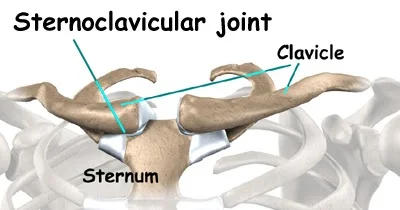When most people talk about the shoulder, they usually think of the ball and socket joint called the glenuhumeral joint. However, the shoulder is actually four joints that need function together. In my opinion, the shoulder is one of the most complicated body parts because of this interconnection of parts. Reaching up for a cup is not as simple as we think.
SCAPULOTHORACIC JOINT
The scapulothoracic joint is your shoulder blade against your rib cage. The scapula refers to the shoulder blade. This bone looks like a wing and it’s the home for the rotator cuff. The rotator cuff is a term for four muscles that attach to the humerus (the big bone in your arm that’s underneath your biceps and triceps). The shoulder blade slides and sits on the rib cage in very specific ways when we reach, grab, pull, and push.
ACROMIOCLAVICULAR (AC) JOINT
The AC joint is where one part of the shoulder blade meets with your collar bone, or clavicle. This joint doesn’t look like it can move, but it definitely does. It has the important function of coordinating smooth movement between the shoulder blade and collar bone with arm motions. A common injury is an AC joint sprain. If somebody falls on their shoulder going head first, they are likely to get one of these sprains.
GLENOHUMERAL JOINT
The glenohumeral joint is where the humerus meets the shoulder blade. It sits underneath the AC joint mentioned previously. The rotator cuff (the four muscles discussed) attach to the humerus. When you reach up, the rotator cuff keeps this motion of glenohumeral joint very controlled. It makes sure that the humerus (the arm bone) doesn’t run into the underside of the AC joint. When that happens, it is called impingement syndrome.
STERNOCLAVICULAR (SC) JOINT
This is where the collar bone meets the sternum. Like the AC joint, this joint doesn’t look like it can move, but also does. There is a disc inside the joint to help with movement. Place your hand on where your collar bone starts. Roll your shoulder forward and backward. Do you feel the collar bone going back and forth? Thanks to the SC joint, that can happen. It’s very rare for this joint to dislocate, but if to does dislocate backwards into the throat region, it can be life threatening.
Do you feel like you know more about the shoulder now? I hope so! It’s an extremely fun and interesting body part. This blog only brushes the surface regarding things that your physical therapist is thinking about when we look at you reach up overhead or put on your coat. Want to know more? Contact us!





